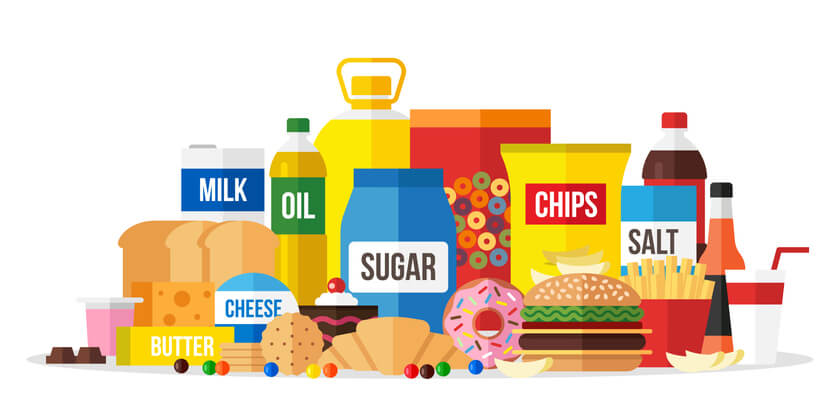
Ultra-Processed Foods May Taste Good, But They May Up Your Risk for Diabetes
By Joy Stephenson-Laws, JD, Founder
If you go to a restaurant and ask to see a kids’ menu, you will likely see food items such as french fries, chicken tenders or nuggets, grilled cheese, macaroni and cheese and pizza.
These foods are classified as “processed” or even “ultra-processed” foods. You can get a thorough explanation of what makes a food minimally processed or ultra-processed here, but essentially ultra-processed foods are nutrient-void and full of additives (cookies, crackers, chips, cured meats, soda, fruit juice from concentrate, etc).
It can be a bit confusing because grocery items such as canned soups may seem like a healthy option, because they may contain vegetables and be labeled “low-fat” or “low-sodium.”
However, “[c]ommon examples of ultra-processed foods include fish fingers, chicken nuggets, ready meals, crisps, factory-produced bread products, soda, shelf-stable meat, canned soups, instant noodles, and chocolate, all of which are extremely popular amongst consumers,” according to one source.
I mentioned the kids’ menu, because we must address America’s childhood obesity epidemic. It’s pretty clear that consumption of ultra-processed foods is making our children overweight.
“Indeed, in recent years, the healthiness of diets among children and adolescents are the ones to have declined the most. Snacks, pizzas, pastries, sweetened fruit juices and ready-made Mexican dishes (mixed dishes with corn or flour tortillas and corn-based dishes), most of them ultra-processed foods, were the ones to present the greatest caloric intake increase in the last 20 years among American children aged 2–6 years,” reports the National Institutes of Health (NIH).
In addition to this, ultra-processed foods have been linked to an increased risk of developing cancer.
But what about type 2 diabetes?
According to the Centers for Disease Control and Prevention (CDC), more than 30 million Americans (one in 10) have diabetes. And 90 to 95 percent have type 2 diabetes.
“Type 2 diabetes most often develops in people over age 45, but more and more children, teens, and young adults are also developing it,” reports the CDC.
And a recent study found evidence which suggests that consuming ultra-processed foods significantly increases the risk of developing type 2 diabetes. The study, conducted by researchers with Paris 13 University, involved 104,707 participants (aged 18 and older). Nearly 80 percent of the participants were women, and about 20 percent were men. The average age was around 42.
"To our knowledge, although ultra-processed foods consumption was previously found to be associated with increased risks of cancer, cardiovascular diseases, mortality, depressive symptoms, and metabolic disorders, no prior prospective epidemiological study had evaluated their association with type 2 diabetes risk," said one of the lead doctors involved in the study, according to this report.
The results of the study revealed that rates of type 2 diabetes in the lowest and highest consumers of ultra-processed foods were 113 (low consumers) and 166 (high consumers) per 100,000 person-years, respectively.
Furthermore, “[e]ach 10-percentage point increase in the amount of ultra-processed foods in participants’ diets was associated with a 15% higher risk of developing diabetes,” according to one report.
It is important to note that the researchers analyzed consumption of more than 3,500 food items, and they did account for other factors such as overall nutritional quality of a person’s diet, weight gain and rates of other metabolic diseases.
So if you need yet another reason to eliminate ultra-processed foods from your diet, there you have it. Diabetes.
How can we be proactive?
Stick to natural, nutrient-dense foods such as fruits, vegetables, legumes, whole grains and lean proteins such as fish. It is also advised to get familiar with healthy swaps. For example, if you tend to be a lover of potato chips, make your own sweet potato fries instead.
Worried about the holidays?
You can still have a healthy but delicious holiday. Read here to learn about healthy, flavorful swaps you can make during the holidays.
For additional tips on what you can do to help prevent or better manage type 2 diabetes, click here.
Finally, schedule routine nutrient tests in order to identify any nutrient imbalances or deficiencies you may have. Being nutritionally unbalanced may increase your risk of developing diabetes and other diseases. If the test reveals you have too much or too little of a certain nutrient, a competent healthcare professional can work with you on making the necessary dietary changes and recommend quality supplements if necessary.
Enjoy your healthy life!
The pH professional health care team includes recognized experts from a variety of health care and related disciplines, including physicians, attorneys, nutritionists, nurses and certified fitness instructors. This team also includes the members of the pH Medical Advisory Board, which constantly monitors all pH programs, products and services. To learn more about the pH Medical Advisory Board, click here.







